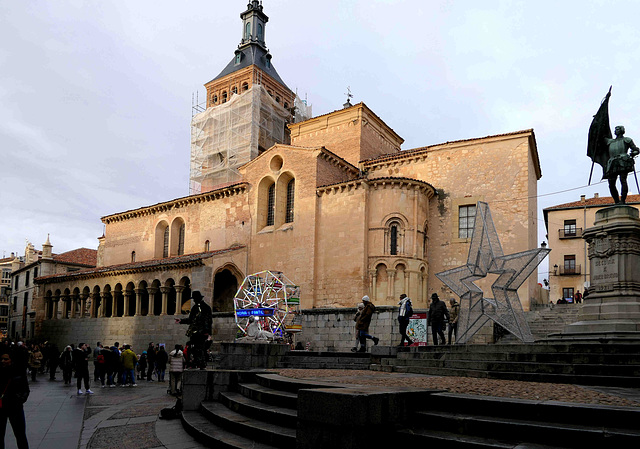Segovia - San Martín
Segovia - San Martín
Segovia - San Martín
Segovia - San Martín
Segovia - Ferris wheel
Segovia - San Lorenzo
Segovia - San Lorenzo
Segovia - San Lorenzo
Segovia - San Lorenzo
Segovia - San Lorenzo
Segovia - San Lorenzo
Segovia - San Lorenzo
Segovia - Acueducto de Segovia
Segovia - Acueducto de Segovia
Segovia - Acueducto de Segovia
Palacio Real La Granja de San Ildefonso
Toledo - Open Blue
Toledo - Alcazar
Toledo - Alcazar
Toledo - El Cristo de la Luz
Toledo - El Cristo de la Luz
Toledo - El Cristo de la Luz
Toledo - El Cristo de la Luz
Segovia - La Vera Cruz
Segovia - La Vera Cruz
Segovia - La Vera Cruz
Segovia - La Vera Cruz
Segovia - La Vera Cruz
Segovia - Catedral de Segovia
Segovia - Catedral de Segovia
Segovia - Catedral de Segovia
Segovia - Catedral de Segovia
Segovia - Catedral de Segovia
Segovia - Catedral de Segovia
Segovia - Catedral de Segovia
Segovia - Catedral de Segovia
Segovia - Catedral de Segovia
Segovia - Catedral de Segovia
Segovia - Catedral de Segovia
Segovia - Catedral de Segovia
Segovia - Catedral de Segovia
Segovia - Catedral de Segovia
Segovia - San Esteban
Segovia - San Esteban
Segovia - San Esteban
Location
Lat, Lng:
You can copy the above to your favourite mapping app.
Address: unknown
You can copy the above to your favourite mapping app.
Address: unknown
See also...
Keywords
Authorizations, license
-
Visible by: Everyone -
All rights reserved
-
84 visits
Segovia - San Martín


A Celtic castle existed here, from which resistance against the Romans originated. The city was nevertheless taken. Afterward, it began to be built as a Roman city and became an important Roman military base.
In the second half of the 5th century, Segovia became part of the Visigoth Empire. From the 8th to the 11th centuries, Segovia was under Moorish possession. In 1085 Alfonso VI conquered the city. From the 13th to the 15th century it was a royal residence.
San Martin was built in the 12th century.
It is located in the center of the town, halfway between the Cathedral and the Roman aqueduct. It is of Mozarabic origin in Romanesque style.
Today's church differs partially from the original as some parts were rebuilt or removed, such as the central apse, which was replaced. It consists of three naves, a transept with a brick dome, and a three-part apse.
The Romanesque-Mudéjar style bell tower was built with brick arches on stone pillars. The arcaded gallery surrounds the entire church with the exception of the chancel.
In the second half of the 5th century, Segovia became part of the Visigoth Empire. From the 8th to the 11th centuries, Segovia was under Moorish possession. In 1085 Alfonso VI conquered the city. From the 13th to the 15th century it was a royal residence.
San Martin was built in the 12th century.
It is located in the center of the town, halfway between the Cathedral and the Roman aqueduct. It is of Mozarabic origin in Romanesque style.
Today's church differs partially from the original as some parts were rebuilt or removed, such as the central apse, which was replaced. It consists of three naves, a transept with a brick dome, and a three-part apse.
The Romanesque-Mudéjar style bell tower was built with brick arches on stone pillars. The arcaded gallery surrounds the entire church with the exception of the chancel.
kiiti, Paolo Tanino have particularly liked this photo
- Keyboard shortcuts:
Jump to top
RSS feed- Latest comments - Subscribe to the comment feeds of this photo
- ipernity © 2007-2025
- Help & Contact
|
Club news
|
About ipernity
|
History |
ipernity Club & Prices |
Guide of good conduct
Donate | Group guidelines | Privacy policy | Terms of use | Statutes | In memoria -
Facebook
Twitter

Sign-in to write a comment.